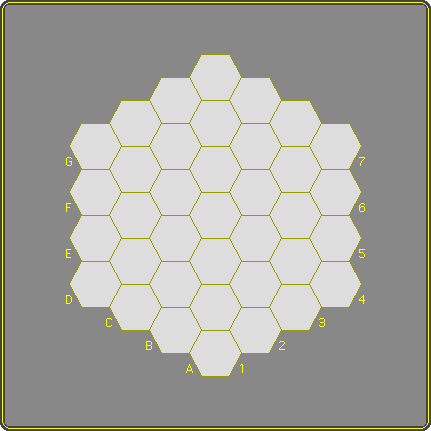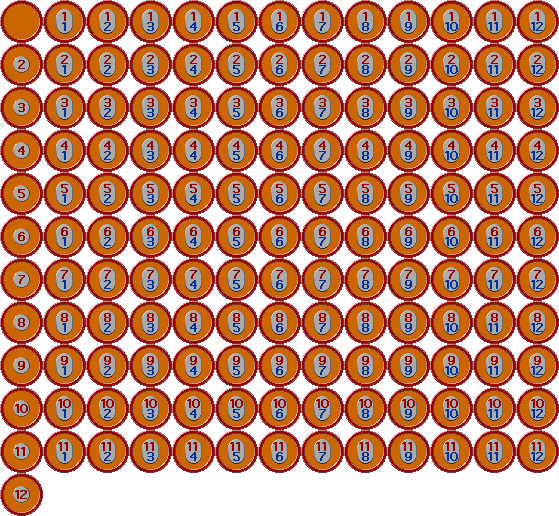Page 3 of 5
Initiative may be more prolongued than in Emergo too, especially with a strong piece, because of a property of the hexboard. If during leapfrogging the opponent's piece ends on the side, a player can more often than not draw it back into the field by a move parallel to the side. This way to keep the initiative is not possible in Emergo.| no Sound | ||||
|
to move
in hand
|
|
|||
|
Pillar fight - White to move and win
|
||||
| The app shows a 7-cap versus 4-cap, defender in opposition. Opposition in Hexemergo is always diagonal opposition. Here the moves that draw Black back into the field are white 3 and 8. This type of move to continue a combination is impossible in Emergo. The flaw Still nothing wrong yet, though. And in over the board play nothing will ever be wrong because players just cannot calculate deep enough without losing track. Hexemergo's flaw was spotted by Ed van Zon, in correspondence play. When playing white, he employed the usual Emergo strategy of trying to keep the game as flat as possible during the entering phase, always taking care not to lose the right on the first move after the entering phase. Next he carefully sifted through the many possible feeding combinations to find a straight knock-out. Hexemergo's flaw is that it is so rich in combinations that his quest invariably succeeded, i.e in correspondence play white has a something of a winning strategy. In over the board play having the first move after the entering stage isn't bad either, but without the trial and error analysis inherent in correspondence play, it is seldom decisive. And the flaw is no reason to not enjoy the game's intricacies. |





